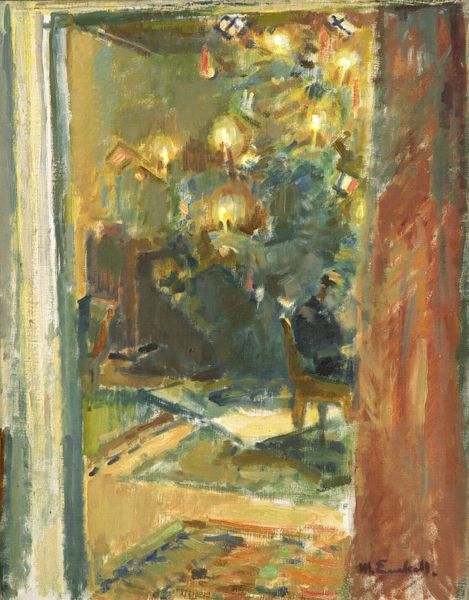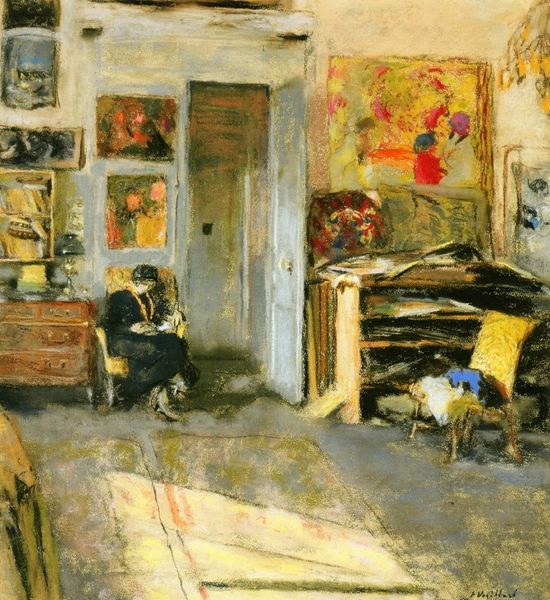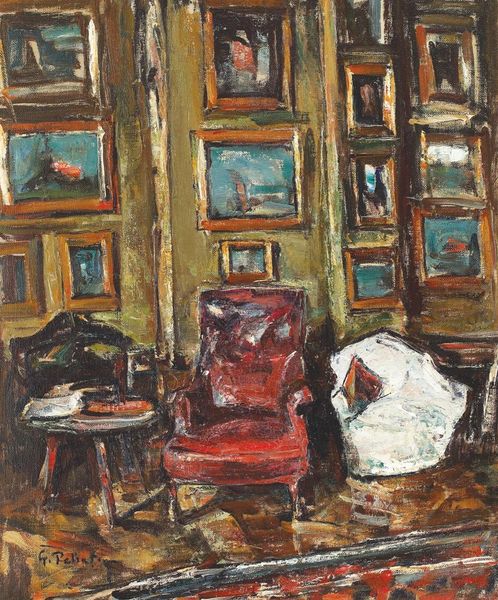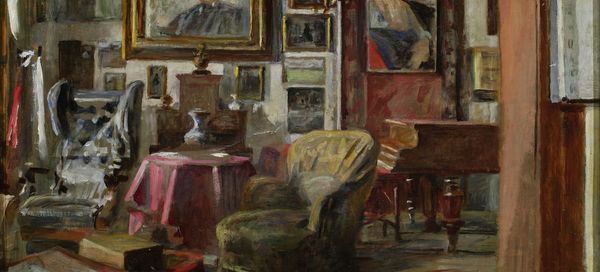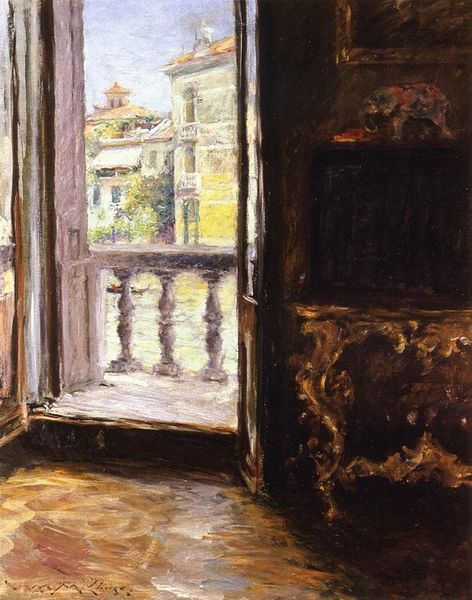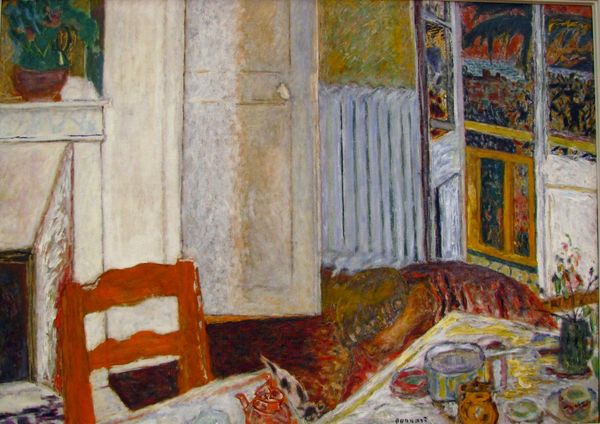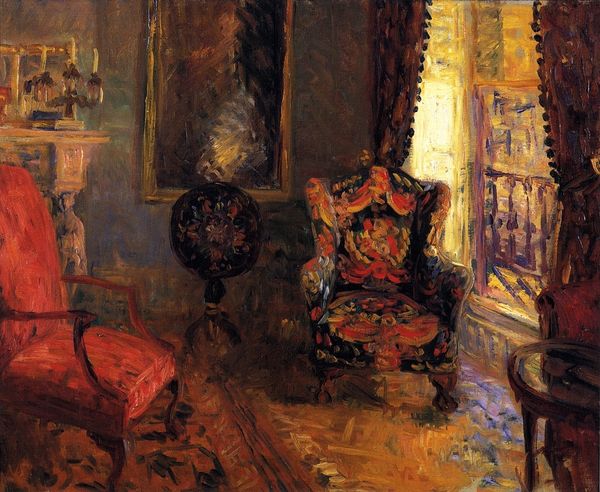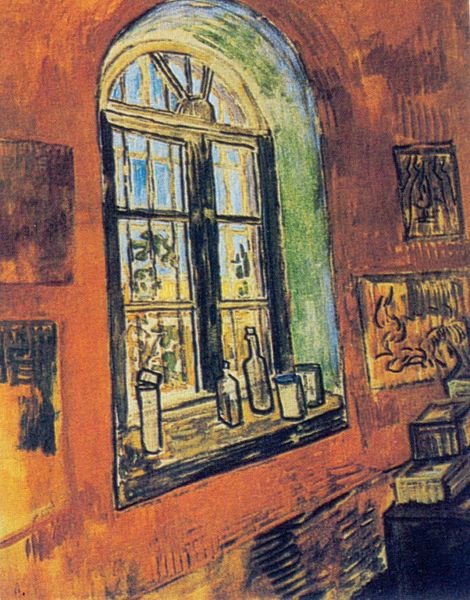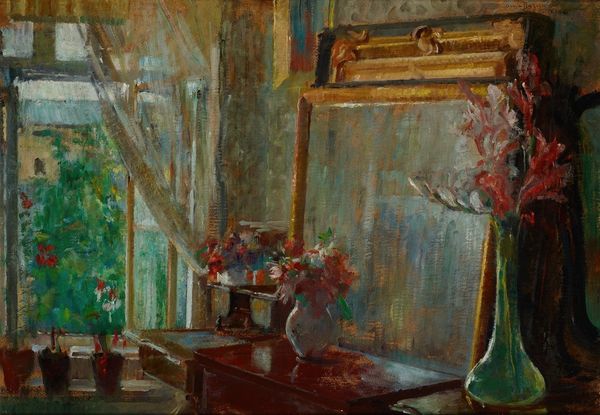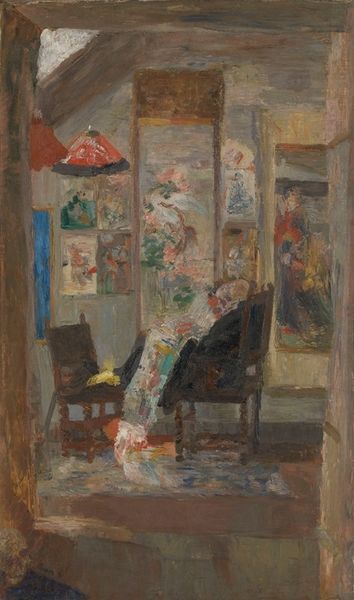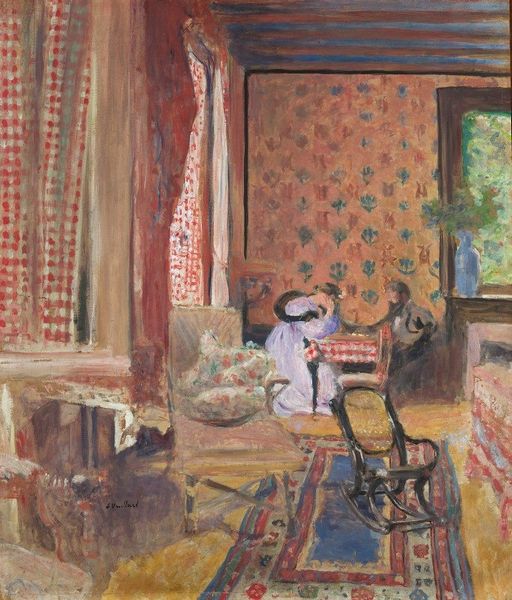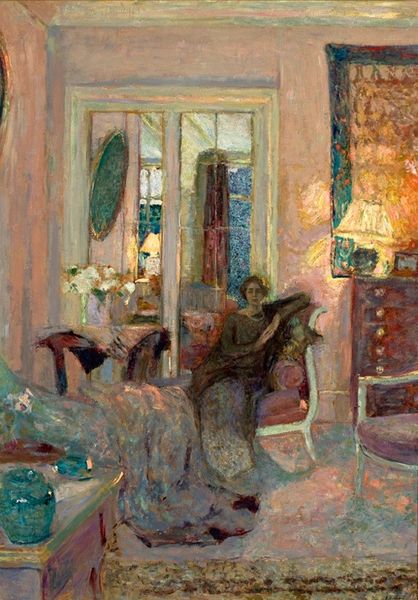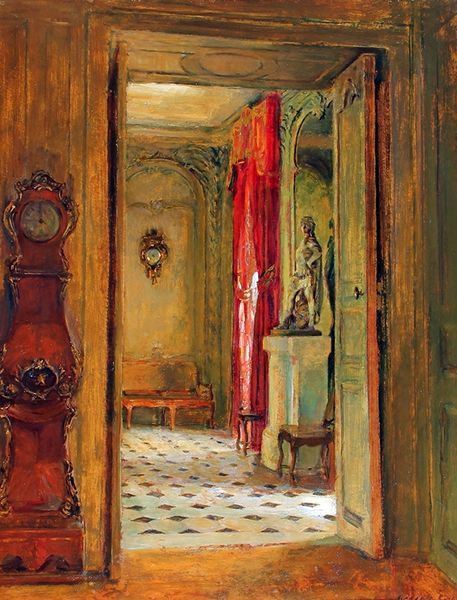
Copyright: Public domain
Curator: Welcome. Today we’re looking at Childe Hassam’s “At the Writing Desk,” created in 1910. Hassam, as we know, was a prolific American Impressionist painter known for his urban and landscape scenes. Editor: My first impression is one of filtered light and contained domesticity. There's a softness to the brushstrokes that blurs the edges of everything. A quiet intimacy is felt immediately, wouldn’t you agree? Curator: Absolutely. And while the surface certainly seduces us, it is crucial to recognize that Hassam often depicted scenes that reflected the comfortable lives of the privileged class. The woman at her writing desk signifies not only leisure but also a certain level of social positioning. Her literacy, the comfortable furnishings… these were potent signifiers in early 20th-century society. Editor: Yet the almost hazy quality of light disrupts any solid, clear presentation. Note how the yellow of the curtains, and of the light flooding in from the window, almost dematerializes the subject. Compositionally, there’s a deliberate lack of strong, clear lines, embracing fluidity. Curator: Indeed. This softness should not lead us to ignore potential tensions inherent in the domestic sphere. Is this a space of freedom for this woman or one of confinement? The ambiguity of her posture, partially turned away, hints at something unspoken. The exterior world—vibrant, active, represented by the colors seen through the window—beckons, creating a dialogue between private life and broader social movements and possibilities for women during this era. Editor: I find it striking how the painting itself is structured around planes of light, reflecting and refracting, suggesting the fleeting, intangible nature of the moment itself. He certainly was exploring the very properties of color in his rendering of shadows. Curator: I see this attention to color, to form, and materiality itself as completely intertwined with the evolving roles of women, and their expressions within domestic life, at the time. Editor: Hassam offers us not just a snapshot of a moment, but an intimate expression through pure paint itself, an experiment that exists for our eyes. Curator: And that, perhaps, leaves it open to many readings, then, even today, doesn’t it? Editor: Precisely. It truly compels us to look closely at every aspect of its construction and its visual effects.
Comments
No comments
Be the first to comment and join the conversation on the ultimate creative platform.

